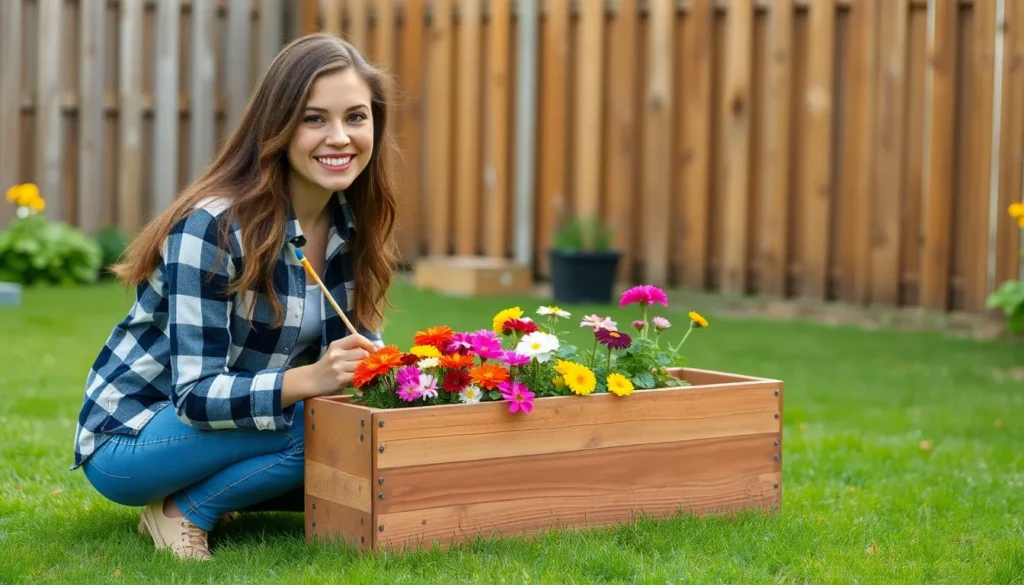Installing cabinet hardware might sound like a DIY chore that ranks right up there with cleaning gutters, but it doesn’t have to be a dull affair. In fact, it’s the secret sauce that can elevate your kitchen or bathroom from “meh” to “wow” faster than you can say “where’s the screwdriver?” With the right tools and a sprinkle of creativity, anyone can transform their cabinets into stylish statements without breaking a sweat.
Table of Contents
ToggleTools Needed For Installing Cabinet Hardware
Equipping yourself with the right tools simplifies the task of installing cabinet hardware. Various essential and optional tools can enhance efficiency and accuracy.
Essential Tools
Drill or screwdriver serves as the primary tool for attachment. Measuring tape ensures accurate placement of hardware. Level guarantees that every handle or knob aligns perfectly. Additionally, a pencil aids in marking positions clearly. A center punch enhances precision by creating starter holes where needed. These tools collectively ensure a smoother installation process.
Optional Tools
Stud finder assists in locating supports behind cabinet surfaces. Clamps can secure hardware in place while drilling. A template simplifies the drilling process, especially for multiple identical pieces. Safety glasses protect eyes during operation. Finally, a utility knife can assist in removing old hardware or adjusting existing fixtures. Utilizing these optional tools can streamline the installation process further.
Steps For Installing Cabinet Hardware

Follow these steps to ensure accurate and efficient installation of cabinet hardware.
Measuring and Marking
Begin measuring the location for each handle or knob. Use measuring tape for precision, ensuring equal spacing between each piece. Mark the spot with a pencil, creating a clear guide for installation. Check that all measurements align with your design plan before proceeding. With a center punch, make a small indentation at each marked spot to help guide the drill. Accurate measurements allow for uniformity in appearance, enhancing the overall aesthetic of the cabinets.
Drilling Holes
Next, gather the drill and select the appropriate drill bit size based on the hardware specifications. Position the drill at the marked indentation and begin drilling straight into the cabinet. Maintain a steady hand to ensure clean holes, avoiding a jagged edge. If you’re installing multiple pieces, drill all holes in one go to save time. Clean up any dust or debris to prepare the surface for the hardware installation. Ensuring precision during drilling prevents misalignment and provides a professional finish.
Attaching Handles and Knobs
After drilling, it’s time to attach the handles and knobs. Align each piece with the drilled holes and insert screws from the back of the cabinet for a seamless look. Use a screwdriver to tighten each screw but avoid overtightening, as this can damage the hardware or cabinet surface. Adjust each handle to ensure they are level before securing completely. Regularly check for alignment during installation, as this step directly influences the final appearance of the cabinets. Each attached piece contributes to a cohesive and polished look throughout the space.
Types of Cabinet Hardware
Different types of cabinet hardware exist to enhance functionality and style. Understanding each type aids in making informed choices for various cabinetry.
Cabinet Handles
Cabinet handles come in various styles, including contemporary, traditional, and minimalist. Sizing varies, which allows homeowners to choose handles that complement their design. Materials such as stainless steel, brass, and plastic provide options that suit different tastes. For instance, heavy-duty handles suit kitchen environments, while sleek options fit bathrooms. Installation can involve single or double screws depending on the design, making it essential to match the handle with existing holes.
Cabinet Knobs
Cabinet knobs offer a more compact alternative to handles and can add character to cabinetry. Styles range from ornate to simple designs, catering to diverse aesthetics. Knobs typically attach with a single screw, simplifying the installation process. Selecting the right size is vital, as larger knobs stand out more prominently. Incorporating knobs across kitchen and bathroom cabinets can create a cohesive look throughout the space.
Pulls and Latches
Pulls and latches provide unique functionality beyond simple opening mechanisms. Various pull designs, such as cup or bar pulls, enhance cabinet access while adding visual appeal. Latches secure cabinet doors, making them invaluable in high-traffic areas. Materials used in pulls and latches often match other hardware, promoting consistency in design. Selecting the right type hinges on the cabinet style, ensuring that aesthetics and usability align successfully.
Tips For Successful Installation
Successful installation relies on careful planning and execution. Attention to detail makes a significant difference in the final appearance of cabinet hardware.
Leveling and Alignment
Leveling and alignment ensure that cabinet hardware looks professional. Using a level helps achieve an even installation across all cabinet faces. Before drilling, place a level across multiple hardware pieces to verify alignment. This check prevents issues later on, as unevenly installed hardware can detract from overall aesthetics. Marking clear guide points helps maintain consistent spacing between handles and knobs. Take time to double-check the layout before proceeding to drilling.
Ensuring Proper Placement
Proper placement contributes significantly to functionality and style. Start by measuring the distance from the top or bottom of each cabinet to where the hardware will sit. Consistency in this measurement across all cabinets enhances visual harmony. Using templates can streamline this process, providing a foolproof way to guarantee uniformity. Additionally, considering hand reach and comfort in access plays a crucial role in placement decisions. Reviewing various designs and styles before finalizing the location ensures optimal usability and aesthetics.
Transforming cabinets with new hardware can truly elevate any space. By following the outlined steps and utilizing the right tools, anyone can achieve a professional finish. The variety of hardware options allows for personal expression while enhancing functionality.
Attention to detail during installation ensures that every handle and knob aligns perfectly, creating a cohesive look. With a little creativity and careful planning, the process becomes not just a task but an opportunity to personalize a home. Embracing this DIY project can lead to stunning results that reflect individual style and enhance overall aesthetics.





